Scottish independence referendum 2014: where are they now?
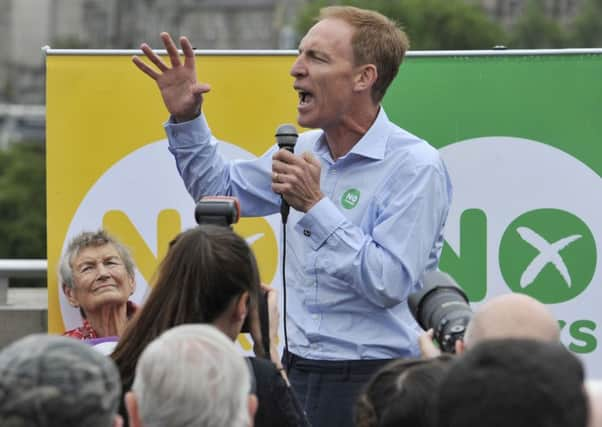

Theresa May anticipates a rerun of the 2014 vote on Scotland’s future next summer, with Nicola Sturgeon’s staff also believed to be on a war footing.
Both sides will have taken notice of thepoll published this week which shows the nationalist and unionists are virtually neck and neck.
Advertisement
Hide AdAdvertisement
Hide AdWith that in mind, we decided to revisit the contrasting fortunes of some of the main players since Better Together beat Yes Scotland by a margin of 55%-45%.
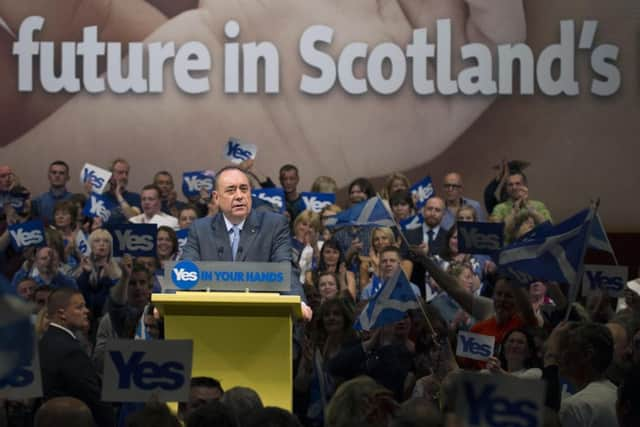

YES SIDE
Alex Salmond – Yes Scotland
It’s often said that all political careers end in failure, and for a few months it seemed like that was the fate to which Alex Salmond was resigned.
A bruising defeat saw him resign as First Minister, and after turning round the SNP from a fringe movement to a credible party of Government, his legacy looked in jeapordy.
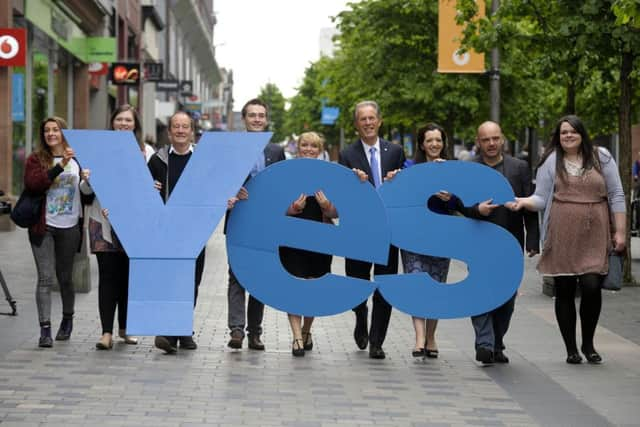

After all the smiles, the selfies, and the TV appearances, the enduring image of the Salmond era threatened to be a now iconic photograph of the glum-looking then SNP leader in the back of his car.
But those who thought the perennial comeback merchant was done were woefully misguided.
After handing over the reigns to more than able Deputy Nicola Sturgeon (more on her later), Salmond announced his intentions to run for a Westminster seat in the 2015 election.
Despite a massive campaign from the Lib Dems (who talked up their chances constantly), Salmond won Gordon in Aberdeenshire with a majority of nearly 9,000.
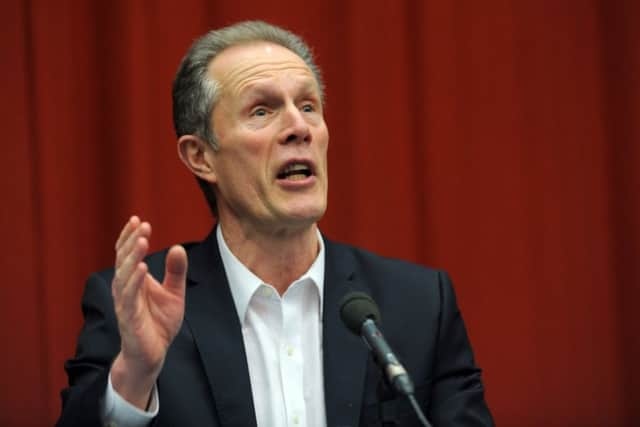

Always reckoned to be more comfortable in the austere surroundings of Westminster, Salmond has returned to the House of Commons like he’s never been away, and as the SNP’s Foreign Affairs Spokesman, has hounded the government on a variety of issues in his own unforgettable style.
Blair Jenkins – Yes Scotland
Advertisement
Hide AdAdvertisement
Hide AdIt is indicative of how the SNP have rebounded from their referendum defeat, or perhaps their stubborn refusal to confront hard truths, that there has yet to be any kind of meaninful ‘audit’ of Yes Scotland’s campaign.
The long-time BBC operator was appointed to his role as the Chief Executive of Yes Scotland in 2012, amid much fanfare.
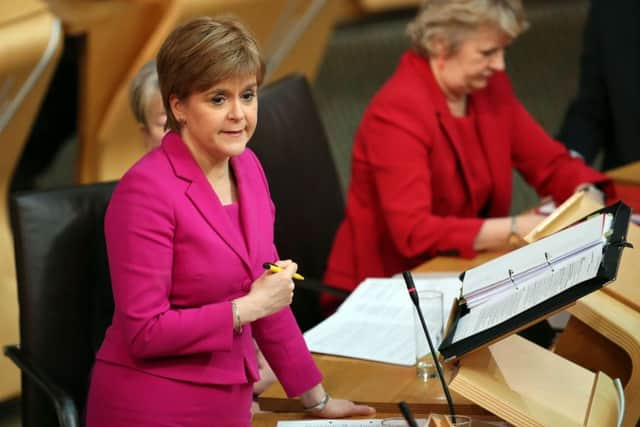

Hoping to learn from mistakes made by similar movements in places like Quebec, Jenkins spoke in almost every constituency in an attempt to boost support for the Yes vote.
Needing a non-party campaign for referendum purposes, the SNP created Yes Scotland in it’s own image, but with input from outside of politics.
The make-up of the ‘advisory board’ was controversial, with questions asked about what campaigning expertise actress Elaine C Smith and musician Pat Kane could bring to the table.
Unlike Darling however, public complaints were kept to a minimum as the Yes campaign, closely tied as it was to the SNP, retained the party’s reputation for managing dissent.
Jenkins himself had little campaigning experience, and he often struggled to make as much headwind as his counterpart McDougall, with whom he occasionally sparred on TV.
Jenkins has kept himself remarkably quiet since the end of the referendum campaign.
Advertisement
Hide AdAdvertisement
Hide Ad

Some of those he worked with at the campaign’s Hope Street HQ have gone on to become full-time SNP aides, or even MPs and MSPs.
For Jenkins, however, that option does not seem tempting.
His own public pronouncements since the vote have been remarkably few. His Twitter account remains largely dormant, though he has occasionally signalled his beliefs on when indyref 2 may be held.
Nicola Sturgeon
“Well done, Nicola Sturgeon!”. “I love how Nicola Sturgeon takes no s***”. “Hands up if you wish you could vote for a party led by Nicola Sturgeon.”
Three tweets from Wednesday evening, sent by celebrities Bianca Jagger, James Corden and Jay Rayner respectively, show just how popular Scotland’s First Minister was.
In Alex Salmond’s shadow for virtually all of her career, Sturgeon took the reigns of the SNP and the independence movement after the 2014 referendum.
Crowned leader without even the hint of a contest, Sturgeon oversaw an explosion in SNP party membership, and was given a UK-wide profile by the 2015 General Election.
Poor Jim Murphy couldn’t get a look in as Sturgeon strutted the big stage with Prime Minister David Cameron and Labour leader Ed Miliband.
She shone in the televised debates, while fellow members of a touted ‘progressive alliance’, Natalie Bennett of the Greens and Plaid Cymru’s Leeanne Wood, struggled.
Advertisement
Hide AdAdvertisement
Hide AdSturgeon had an election to fight closer to home in 2016, and while the SNP was deprived of it’s majority, the party’s share of the constituency vote was nearly twice that of their nearest rivals.
The First Minister has fared best since the referendum of all of those featured on our list, and at just 46, could be in charge for a good while yet.
The Brexit fallout had many thinking Sturgeon had overplayed her hand, but her profile has been boosted again after Jeremy Corbyn backed the triggering of Article 50.
Sturgeon has come a long way from being number two in a losing campaign, and reminds arguably the most effective politician in the whole of the UK.
NO SIDE
Jim Murphy – Better Together
Who needs a soapbox when you have an Irn Bru crate or two? Murphy’s 100 Towns tour, where he rocked up with his crates in town centres to talk to voters, had wildly divergent responses.
At Better Together HQ, they were glad of a high profile figure pitching in. Within Scottish Labour however, the move was viewed with suspicion, seen as a vanity project from a man with one eye on Johann Lamont’s job.
It was doubly helpful for the No Campaign that the inexplicable reaction of sections of the independence movement was to film, heckle, and otherwise intimidate Murphy.
An egg might have been as close as a Murphy rally came to actually violence, but the continual attempts to shout him down in town centres allowed Murphy’s message to be contrasted with those he could easily portray as political extremists.
Advertisement
Hide AdAdvertisement
Hide AdAfter the referendum Murphy was all too happy to pick up the cudgel of Scottish Labour leadership.
Though he was seen as the best option, in truth the SNP couldn’t have dreamed for a better leader to face off against in the lead up to the 2015 election.
A Blairite face of the No campaign who had voted for the Iraq war who represented a long-time Tory constituency, Murphy made mistake after mistake.
While circumstances weren’t ideal, and Murphy’s law started to look like it had been named after the teetotal vegetarian, he didn’t help himself by declaring Scottish Labour wouldn’t lose a single one of it’s MPs.
He was almost right. Rather than not losing one MP, Labour lost all but one MP, as the SNP won a number of their seats, including Murphy’s.
Despite a desperate bid to hang on, Murphy handed over to Kezia Dugdale.
Since leaving frontline politics, Murphy has established his own consultancy firm - Arden Strategies - in which he acts as a business and strategic adviser.
His company website says he has a “range of clients across the UK and internationally”.
Alistair Darling – Better Together
Advertisement
Hide AdAdvertisement
Hide AdThere were eyebrows raised when Alistair Darling was given the role as the political figurehead of the official No campaign.
Some bemoaned that while Darling had an undeniable political pedigree and intellectual heft as a former Chancellor, someone with a bit more pizazz was required to take on the consummate showman Alex Salmond.
There were also concerns that Salmond might have a field day with Darling’s role in the 2009 expenses scandal. As an MP at the time, however, Salmond’s own controversial spending effectively cancelled that of his counterpart.
Absurd rumours that Darling would be replaced by his former boss Gordon Brown or top Tories Jeremy Hunt and Michael Gove, were quickly dismissed after circulating in the right wing press.
Ever the quiet man, Darling did what he always had done, and got on with his work. He handily beat Alex Salmond in the first of their televised debates.
Salmond, a keen gambler, wouldn’t have appreciated being bested by Darling, who was a near 2/1 underdog.
Darling was made a Life Peer in 2015, and entered the House of Lords at the same time as controversial bra tycoon Michelle Mone.
He recently joined forces with former foe George Osborne to take a leading role in warning of the financial risks of leaving the European Union.
Blair McDougall – Better Together
Advertisement
Hide AdAdvertisement
Hide AdThe other half of ‘The Two Blairs’ wasn’t strictly the opposite number of Jenkins, he was the Campaign Director of Better Together.
However, with Salmond and Darling squaring off as political figureheads, it often fell to the namesakes to do the bulk of the campaigning work.
McDougall was a veteran political operative, serving as an adviser during the later years of the New Labour project.
He later left to run the narrowly unsuccessful leadership campaign of David Miliband, who lost out to his brother Ed in the race to succeed Gordon Brown.
McDougall worked across party lines as he led Better Together, a controversial, if arguably necessary, move.
Pictures of him speaking at Tory conference were manna from heaven for Yes activists, who still circulate them online today.
McDougall, whose wife had their second child at the frenetic height of the referendum campaign, previously spoke of his relief at spending more time with his family.
He briefly returned to frontline politics with Scottish Labour, taking a crucial role in the ultimately abortive leadership of Better Together cohort Jim Murphy.
Advertisement
Hide AdAdvertisement
Hide AdMcDougall is still working on his long time passion project of writing a book on Labour hero Keir Hardie.
He is currently still working as a consultant, where he has undertaken jobs in strategy and communications for a number of charities.
Unlike his counterpart, his Twitter account, a mix of food, politics, and history, is still active daily, much to the chagrin of the cybernats who flood it with abuse.